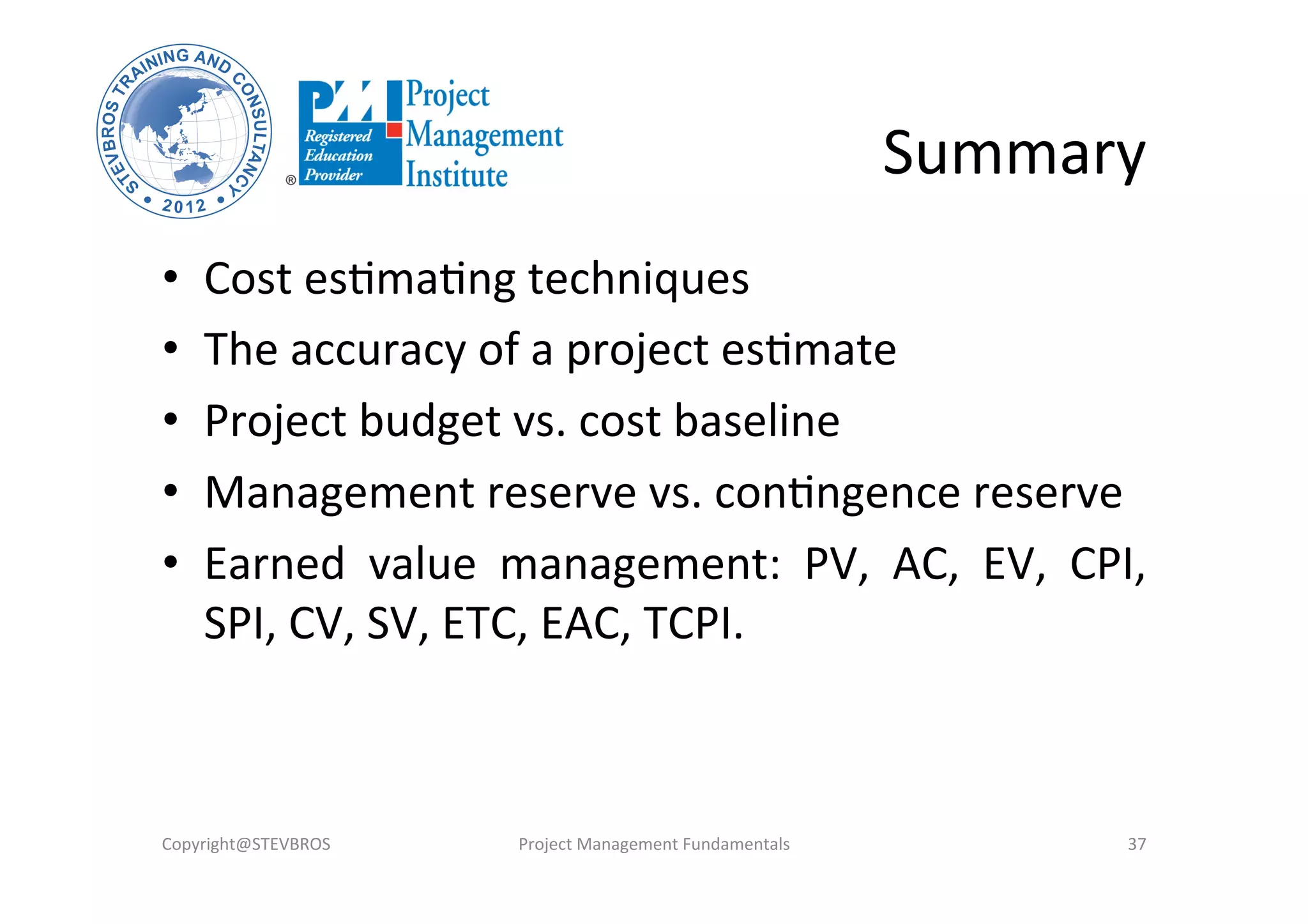This document provides an overview of project cost management. It discusses key concepts like life cycle costing, value analysis, types of costs (variable, fixed, direct, indirect). It also summarizes the main processes in project cost management - plan cost management, estimate costs, determine budget, and control costs. For each process, it lists the typical inputs, tools and techniques, and outputs involved. The overall document serves as an introductory guide to understanding and planning for the costs associated with a project.

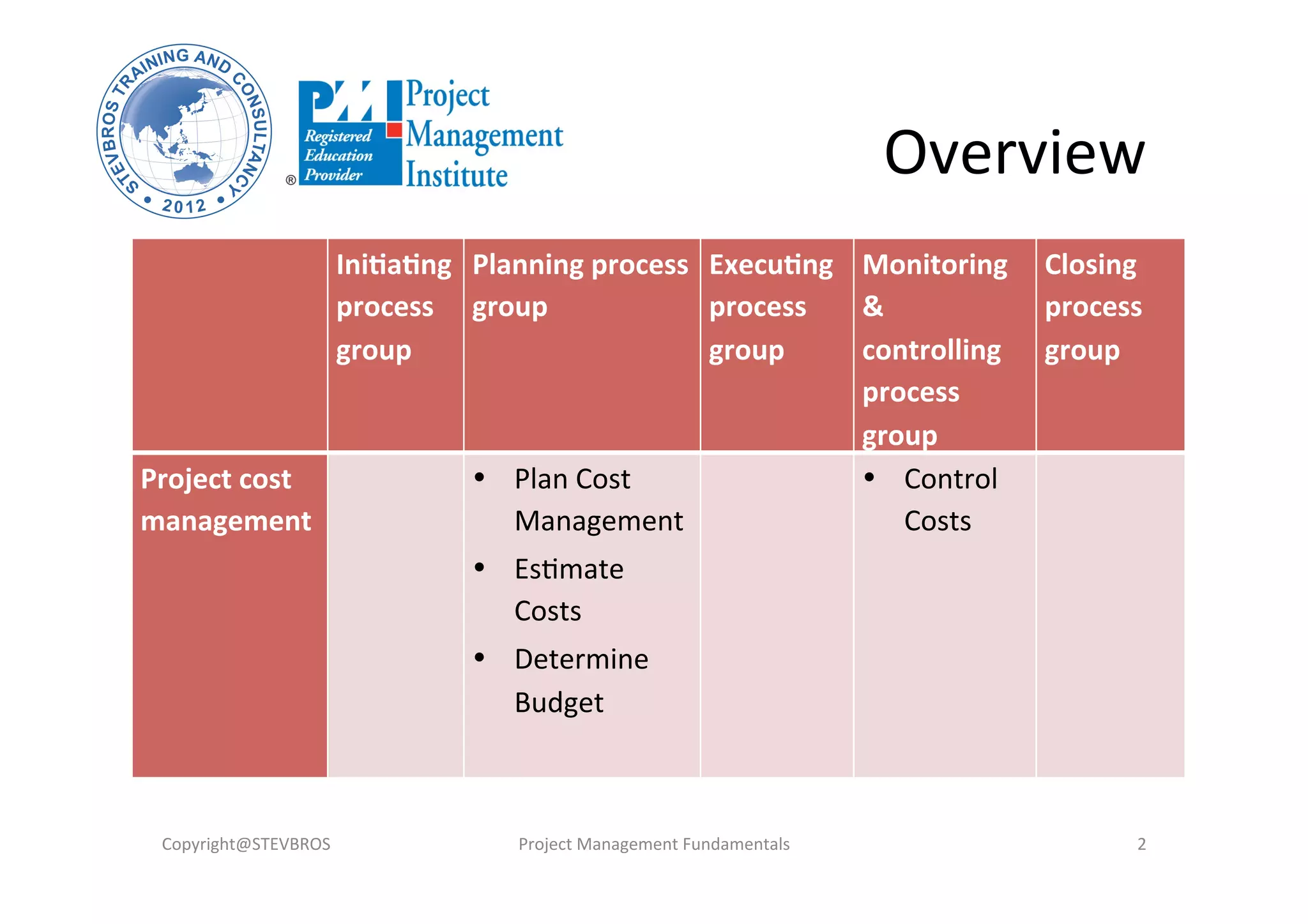





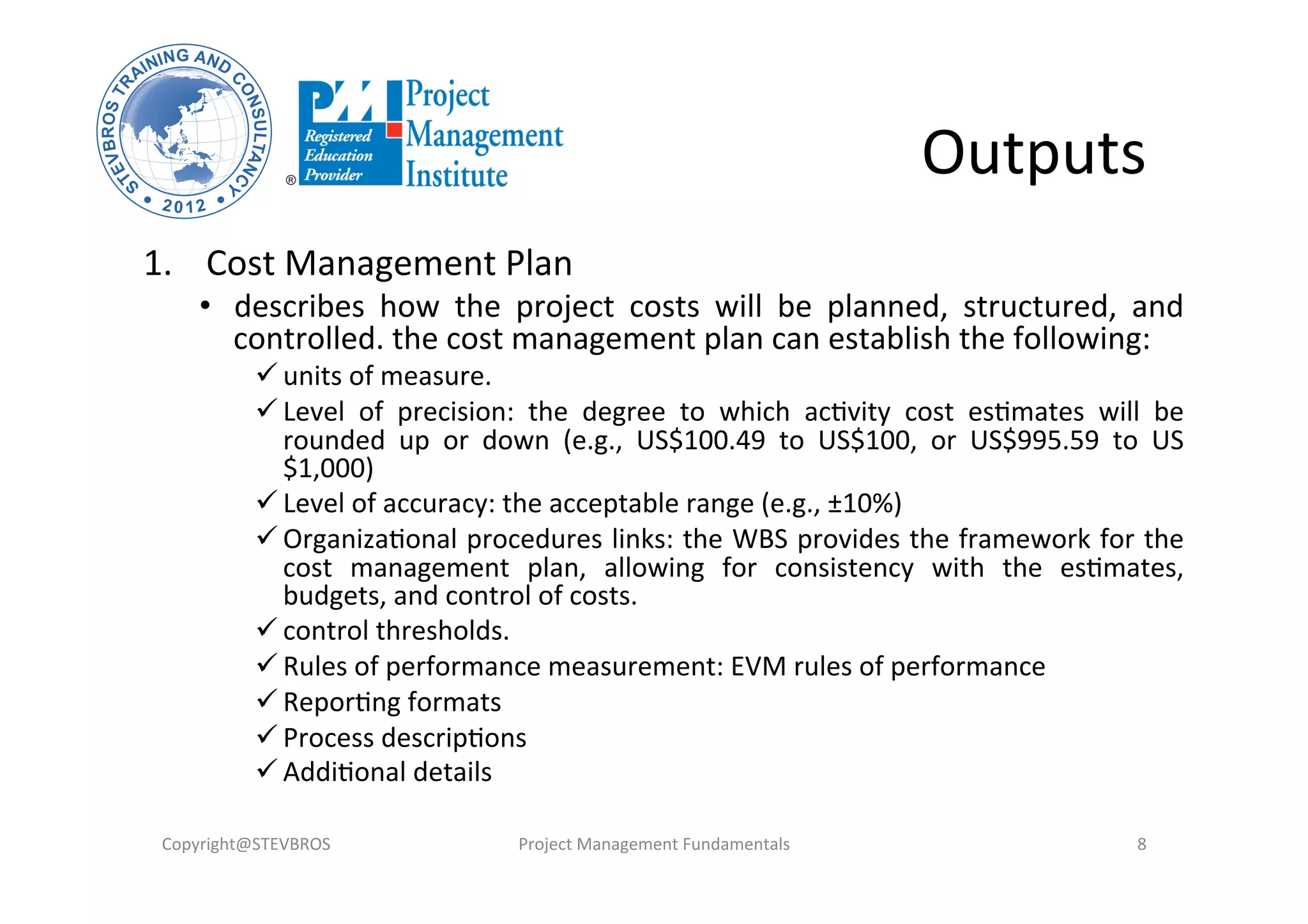


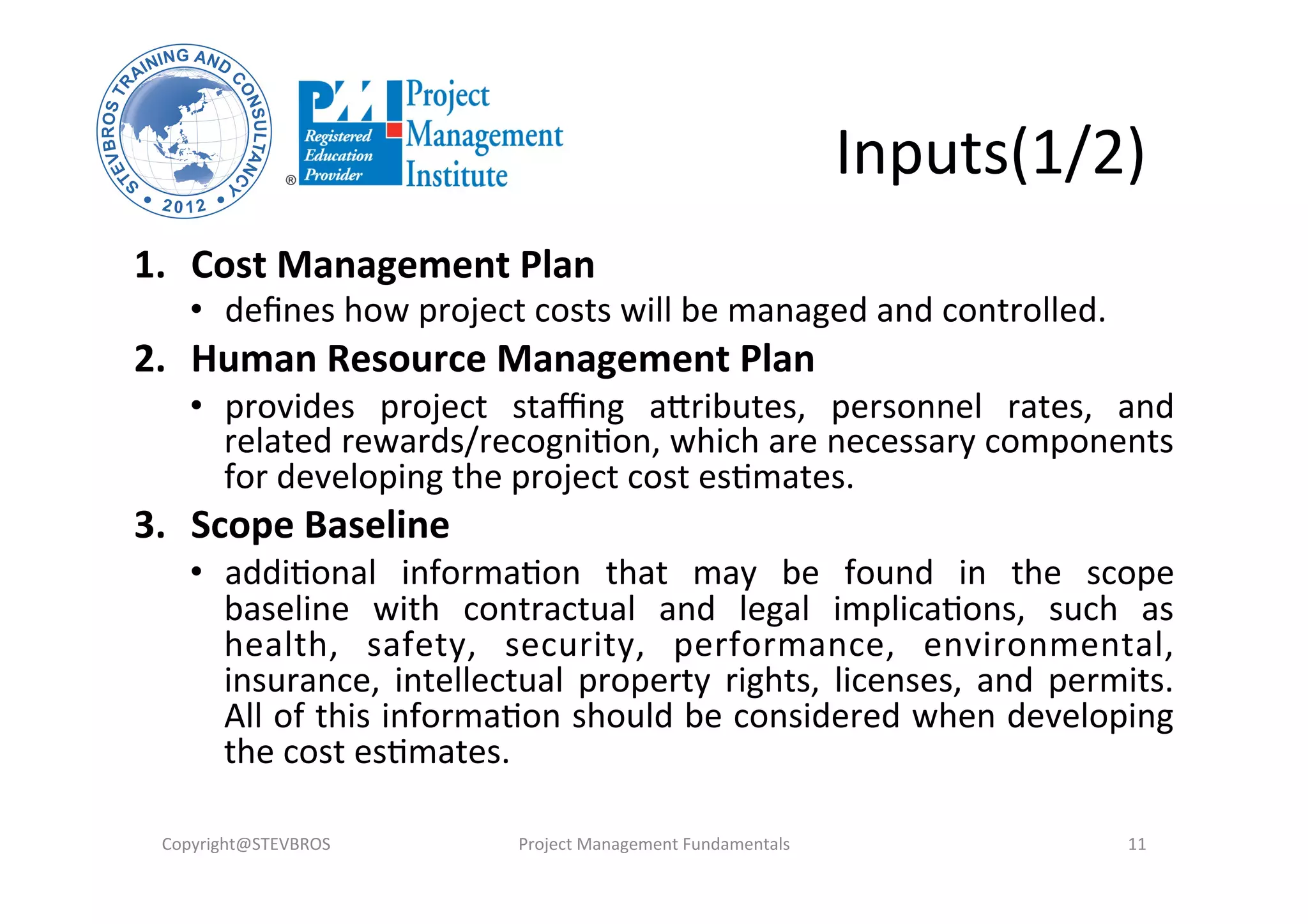










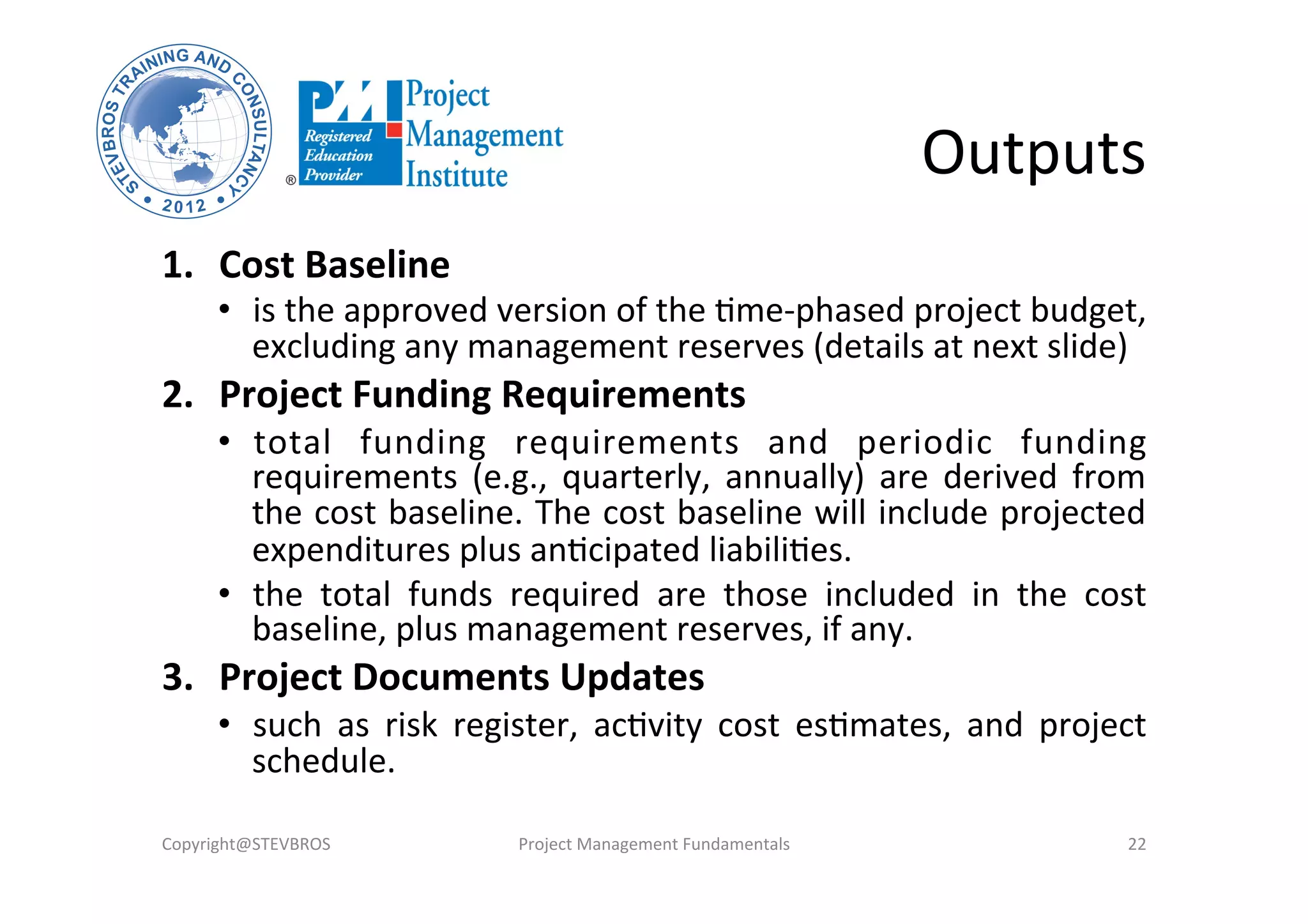










![EVM
• ForecasHng:
o EAC
forecast
for
ETC
work
performed
at
the
budgeted
rate.
This
EAC
method
accepts
the
actual
project
performance
to
date
(whether
favorable
or
unfavorable)
as
represented
by
the
actual
costs,
and
predicts
that
all
future
ETC
work
will
be
accomplished
at
the
budgeted
rate.
EquaHon:
EAC
=
AC
+
(BAC
-‐
EV)
o EAC
forecast
for
ETC
work
performed
at
the
present
CPI.
This
method
assumes
what
the
project
has
experienced
to
date
can
be
expected
to
conHnue
in
the
future.
The
ETC
work
is
assumed
to
be
performed
at
the
same
cumulaHve
cost
performance
index
(CPI)
as
that
incurred
by
the
project
to
date.
EquaHon:
EAC
=
BAC
/
CPI
o EAC
forecast
for
ETC
work
considering
both
SPI
and
CPI
factors.
In
this
forecast,
the
ETC
work
will
be
performed
at
an
efficiency
rate
that
considers
both
the
cost
and
schedule
performance
indices.
This
method
is
most
useful
when
the
project
schedule
is
a
factor
impacHng
the
ETC
effort.
EquaHon:
EAC
=
AC
+
[(BAC
-‐
EV)
/
(CPI
×
SPI)]
Copyright@STEVBROS
Project
Management
Fundamentals
33](https://image.slidesharecdn.com/5-170419161412/75/Project-Cost-Management-33-2048.jpg)



